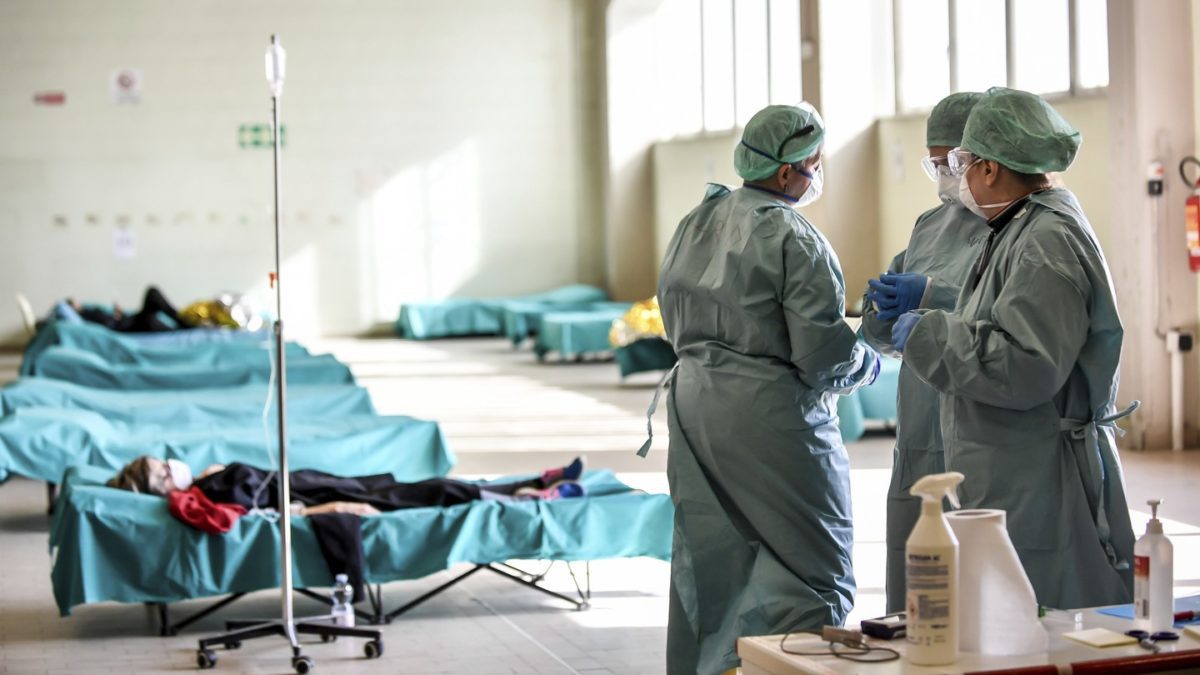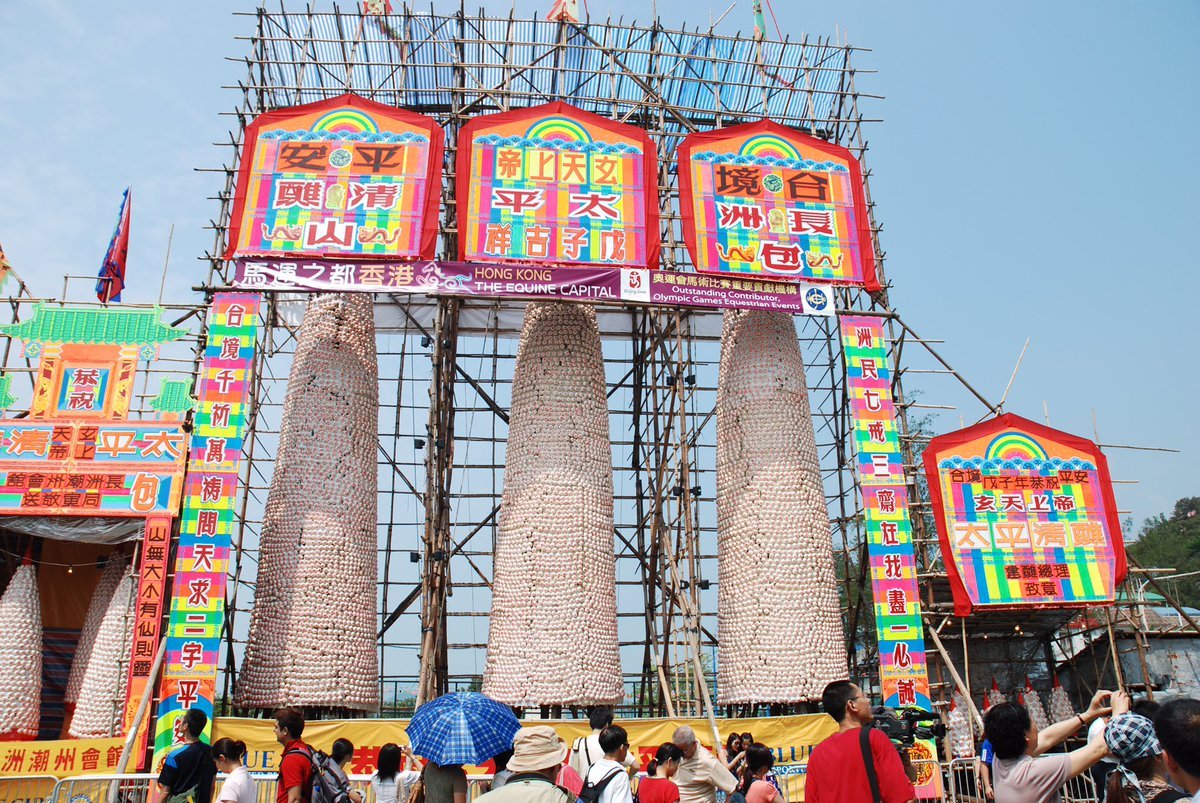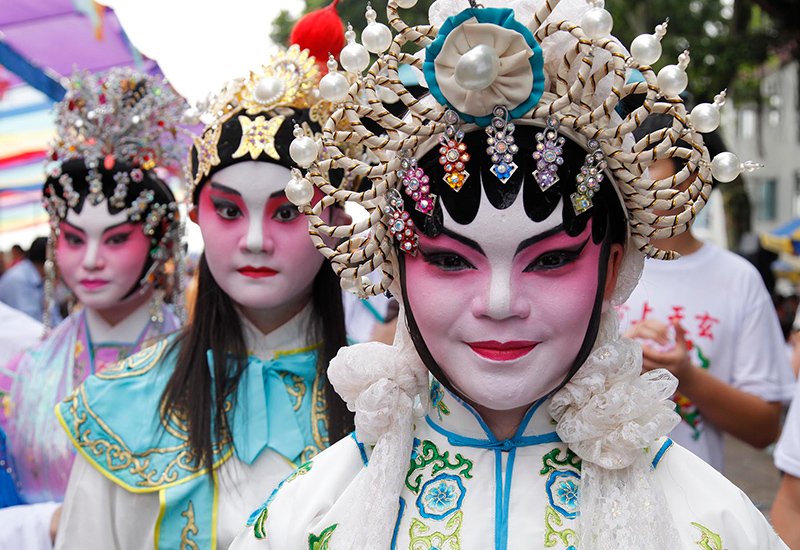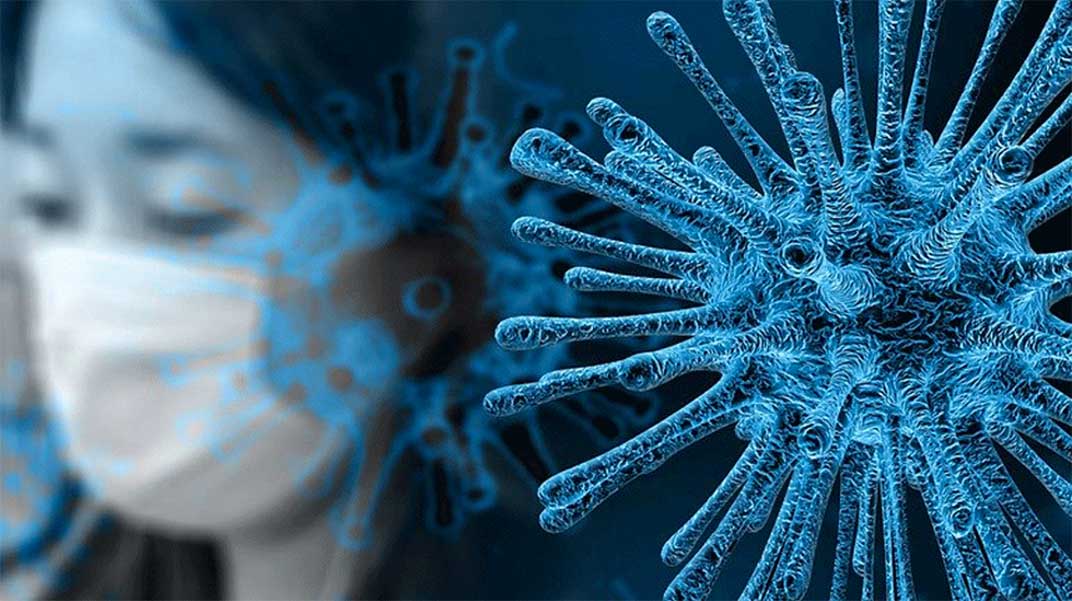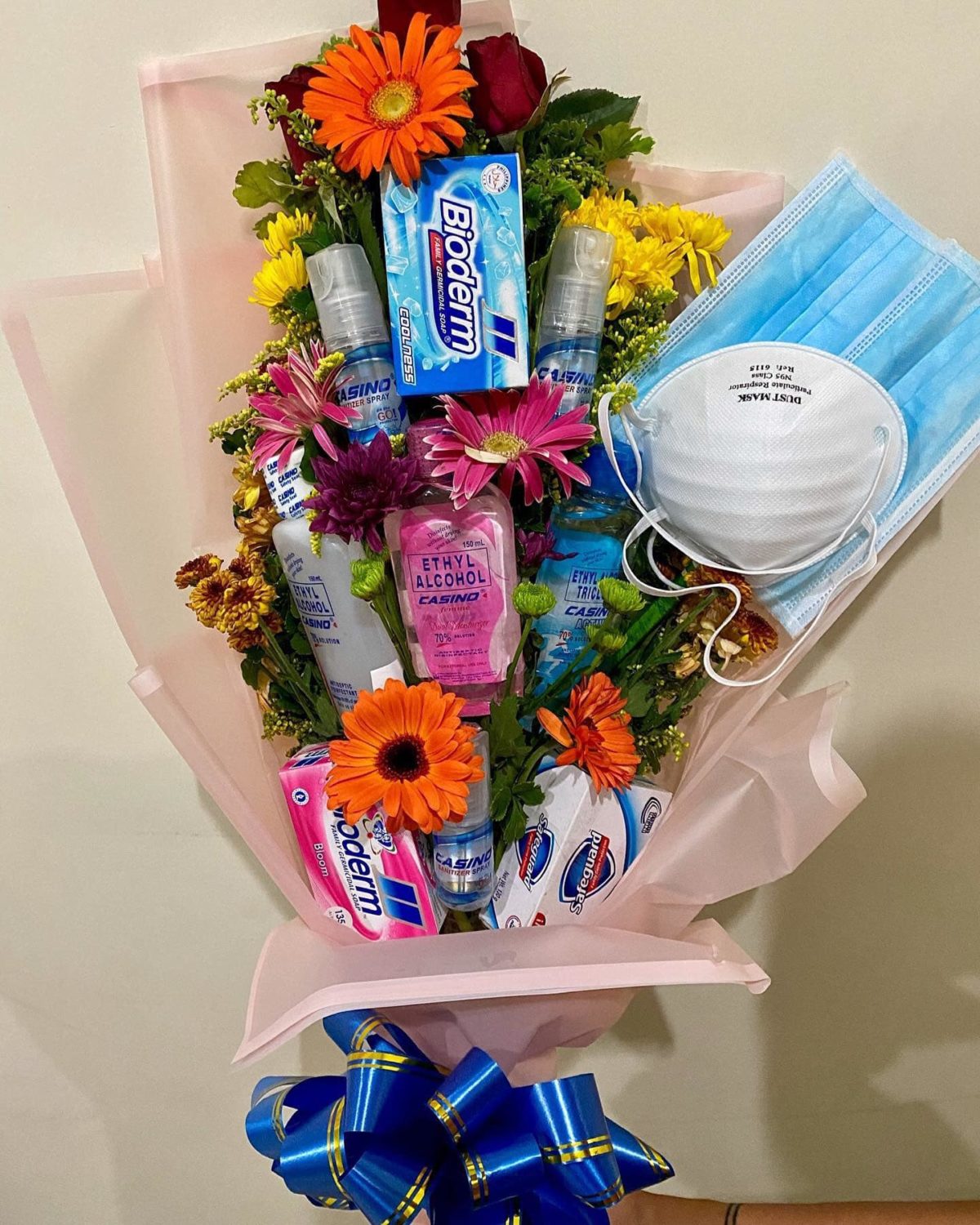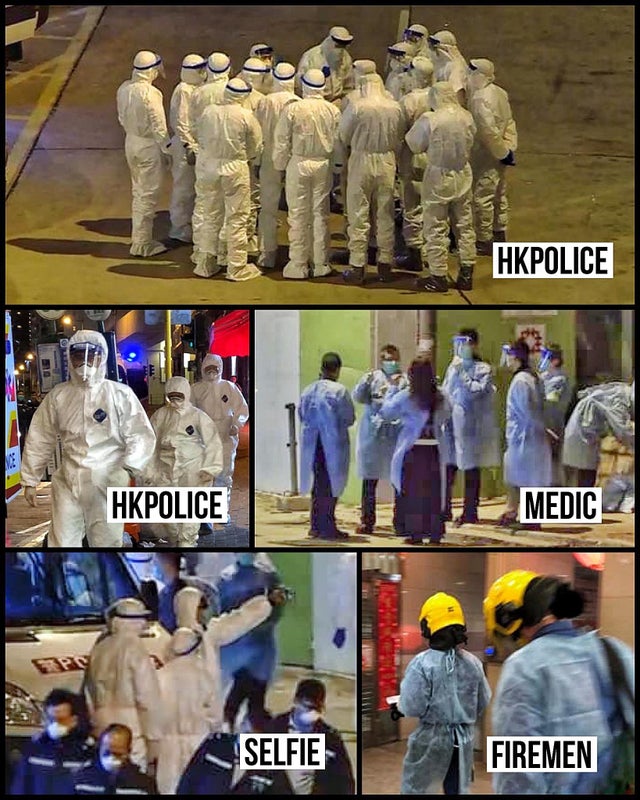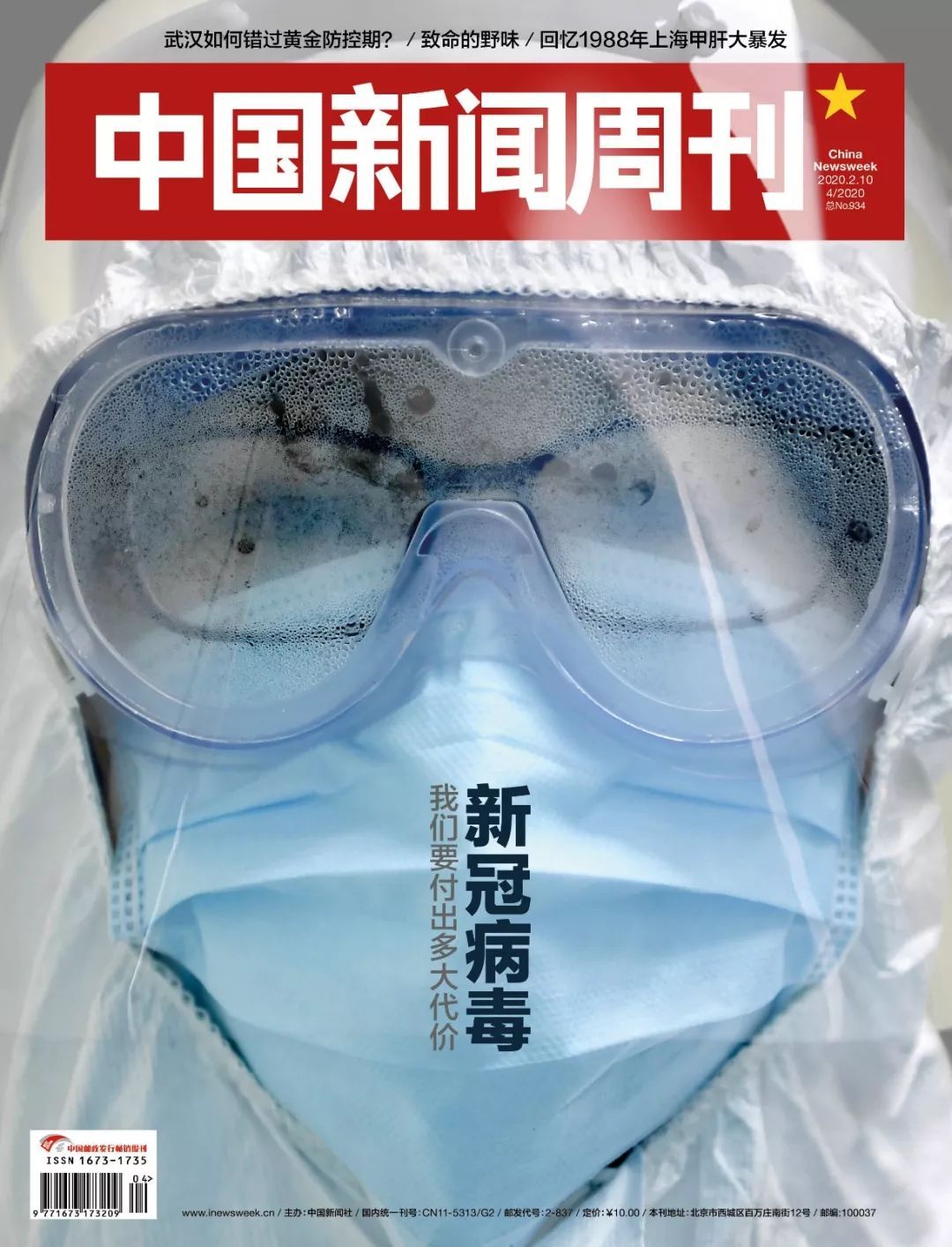Source: Reporters at Caixin.com published an article tracing the source of the Wuhan Flu/coronavirus. The article has since been deleted, Jennifer Zeng translated the article and published it on her blog.
[Caixin.com] Tracing to the source, as of February 24, more than 2660 people have died and more than 77,000 people have been diagnosed with the novel coronavirus, a novel coronavirus similar to SARS. When was it found? Caixin reporters conducted interviews from various sources and sorted out relevant papers and database materials. By piecing together all sorts of information, the full picture is gradually emerging.
【财新网】追根溯源,截至2月24日已致2660多人死亡、77000多人确诊感染的新冠病毒,这种与SARS相近的新型冠状病毒何时被发现?财新记者通过多方采访,并梳理相关论文、数据库资料印证,使信息拼图逐渐完整地浮现出来。
All kinds of evidence show that before the end of December last year, no less than nine samples of unknown pneumonia cases were collected from hospitals in Wuhan. Gene sequencing showed that the pathogen was a SARS-like coronavirus. These test results were reported back to the hospital and reported to the Health Commission and Disease Control System. Until January 9th, CCTV reported that the “Wuhan Viral Pneumonia Pathogen Testing Results Preliminary Evaluation Expert Group” officially announced the pathogen as “novel coronavirus”.
种种证据显示,在去年12月底之前,有不少于九名不明肺炎病例的样本被从武汉各医院采集,基因测序显示病原体是一种类SARS冠状病毒,这些检测结果陆续回馈医院并上报给了卫健委和疾控系统。直至1月9日,央视报道,“武汉病毒性肺炎病原检测结果初步评估专家组”正式宣布病原体为“新型冠状病毒”。
The Test Result of the First Case Came Out as Early as Dec. 27
首例12月27日即出结果
On December 15, 2019, a 65-year-old male delivery man in the South China Seafood Market started having a fever. On December 18, he came to the emergency department of the Wuhan Central Hospital (Nanjing Road District) to see a doctor. The doctor suspected that it might be community-acquired pneumonia, and admitted him to the emergency department ward of the hospital. Community-acquired pneumonia is a generic term for pneumonia caused by a variety of microorganisms such as bacteria, viruses, chlamydia, and mycoplasma. The main clinical symptoms are cough, with or without sputum, and chest pain.
2019年12月15日,一名65岁的华南海鲜市场男性送货员开始发烧。12月18日,他来到武汉市中心医院本院(南京路院区)急诊科看病,医生怀疑可能是社区获得性肺炎,将其收治入该院急诊科病房。社区获得性肺炎是一类由细菌、病毒、衣原体和支原体等多种微生物所引起的肺炎的泛称,主要临床症状有咳嗽、伴或不伴咳痰和胸疼。
On December 22, the patient became iller and entered the ICU. Doctors used various antibiotics to treat him, but without any good result. Professor Zhao Su, the chief physician of the Department of Respiratory Medicine of Wuhan Central Hospital, told Caixin reporter that on December 24, a deputy chief physician of Respiratory Medicine took a bronchoscopy sample from the patient, and then sent the patient’s alveolar lavage fluid sample to the first Tripartite testing agency Guangzhou Weiyuan Gene Technology Co., Ltd. conducts NGS testing, hoping to use its second-generation high-throughput gene sequencing technology (mNGS) based on metagenomics to find pathogens. Alveolar lavage is a treatment that removes inflammatory secretions in the alveoli and improves respiratory function. For lower respiratory tract and lung diseases, the content of pathogens in alveolar lavage fluid is higher than that of throat swabs.
12月22日,这位病人病情加重,进入ICU,医生们使用了各种抗生素治疗无效。武汉市中心医院呼吸内科主任医师赵苏教授告诉财新记者,12月24日,呼吸内科一名副主任医师对这位病人进行了气管镜采样,然后将病人的肺泡灌洗液样本送到第三方检测机构广州微远基因科技有限公司进行NGS检测,希望利用其基于宏基因组学的二代高通量基因测序技术(mNGS),找出病原体。肺泡灌洗是一种清除肺泡内炎性分泌物等、改善呼吸功能的治疗方法,对下呼吸道和肺部疾病来说,肺泡灌洗液中的病原体含量高于咽拭子。
Weiyuan Gene is the full name of Guangzhou Weiyuan Gene Technology Co., Ltd., established in June 2018. Its job advertisement states that it focuses on precision medicine in oncology and infectious etiology, and has a sequencing platform (NGS) based on second-generation high-throughput sequencing technology.
微远基因全称广州微远基因科技有限公司,成立于2018年6月。其招聘广告称专注于肿瘤学和感染病原学精准医疗,拥有基于二代高通量测序技术的测序平台(NGS)。
“Since the start of BGI’s sequencing technology, many gene sequencing companies have appeared in China. In recent years, at our various medical seminars, the second-generation high-throughput gene sequencing technology has been continuously introduced. These companies have also sent medicines. Delegates went to major hospitals to preach. “Zhao Su told Caixin reporter. BGI (300676.SZ) is called Shenzhen BGI Gene Co., Ltd., formerly known as Beijing BGI Gene Research Center, and was established in 1999. It has successively completed a number of international human genome projects in China, rice and the giant panda genome project, with genomic research with an international advanced level. In July 2017, it was listed on the GEM under the title of “The First Gene Sequencing Unit” and is the world’s largest genomics R & D institution.
“自华大基因利用测序技术起家以来,国内大大小小出现了好多家基因测序公司,这些年我们各类医学研讨会上,二代高通量基因测序技术不断被介绍,这些公司也派出医药代表到各大医院宣讲。”赵苏对财新记者说。华大基因( 300676.SZ )全称为深圳华大基因股份有限公司,原名北京华大基因研究中心,成立于1999年,先后完成了国际人类基因组计划中国部分、水稻和大熊猫基因组计划等多项具有国际先进水平的基因组研究工作。2017年7月以“基因测序第一股”登陆创业板,是全球最大的基因组学研发机构。
Another doctor from Wuhan Union Medical College Hospital also introduced, “One test, with 6 million base sequences, costs 3,000 yuan. If with 3000 yuan’s cost, we can find out what virus or bacteria the pathogen is, it may save lives.”
另一位武汉协和医院的医生也介绍,“测一次,600万个碱基序列,3000元,这3000元能查出来病原体究竟是什么病毒或者细菌,就可能救命。”
Generally speaking, the gene-sequencing company should feedback on the test results three days later, that is, December 27, but Weiyuan Gene did not give a written report. “They just called us and said it was a new coronavirus.” Zhao Su said. At this time, the patient was transferred to Wuhan Tongji Hospital on December 25.
一般来说,基因测序公司应当在三天后,也就是12月27日反馈检测结果,但微远基因并没有给出书面报告。“他们只是电话通知我们,说是一种新的冠状病毒。”赵苏说。此时这名病人已经于12月25日转入武汉同济医院。
On February 21, 2020, the genetic test information of this case was disclosed by an article of WeChat account “Wei Yuan Gene”. The official article wrote that the Chinese Journal of Medical Sciences (English version) published a paper on January 27, introducing the discovery of new coronaviruses, and “Wei Yuan Gene” involved in the early discovery of new coronaviruses.
2020年2月21日,这个病例的基因检测信息,被微信公号“微远基因”的一篇文章披露出来。该篇公号文章写道,中华医学杂志(英文版)于1月27日发表论文,介绍新型冠状病毒发现始末,微远基因参与了新型冠状病毒早期发现工作。
The aforementioned paper published in the Chinese Medical Journal (English version) refers to the article “Identifying a New Coronavirus that Causes Severe Pneumonia in Humans: A Descriptive Study” published on January 29. The authors are from the Institute of Pathogen Biology of the Chinese Academy of Medical Sciences / Peking Union Medical College (hereinafter referred to as the Institute of Pathogens of the Chinese Academy of Medical Sciences), China-Japan Friendship Hospital, Hubei Provincial Center for Disease Control, Wuhan Jinyintan Hospital, Wuhan Central Hospital, Guangzhou Weiyuan Gene Technology Co., Ltd. and other units. Xu Teng, the chief technology officer of Weiyuan Gene, is the co-first author of the paper, and CEO Yongjun Li and chief operating officer Wang Xiaorui are the authors. Li Yongjun was a former bioinformatics analyst at the Institute of Pathogens, Chinese Academy of Medical Sciences.
前述发表于《中华医学杂志(英文版)》的论文,是指1月29日发表的“鉴定一种能引发人类严重肺炎的新型冠状病毒:一项描述性研究”一文。论文作者来自中国医学科学院/北京协和医学院病原生物学研究所(下称中国医学科学院病原所)、中日友好医院、湖北省疾控中心、武汉市金银潭医院、武汉市中心医院、广州微远基因科技有限公司等单位。微远基因的首席技术官许腾为该论文共同第一作者,CEO李永军和首席运营官王小锐为署名作者。李永军曾任中国医学科学院病原所生物信息分析员。
According to the paper, the researchers collected clinical data and bronchoalveolar lavage samples from five patients with severe pneumonia at Jinyintan Hospital of Wuhan, Hubei Province, and performed pathogenic metagenomics (mNGS) analysis. As a result, a coronavirus with 79% similarity to the nucleotide sequence of the SARS virus had never been reported in these samples. The article shows that among the samples of these five patients, the earliest clinical sample for genetic sequencing was a 65-year-old patient sample collected on December 24. He developed symptoms on December 15 with symptoms of high fever, cough, and low sputum. He was admitted on the 18th and admitted to the ICU on December 22. After 16 days, she continued to have a high fever and developed severe shortness of breath.
根据该论文,研究人员收集了湖北武汉金银潭医院5例重症肺炎患者的临床资料和支气管肺泡灌洗样本,进行了病原宏基因组学(mNGS)分析。结果在这些样本中都发现了一种此前从未报告过的、与SARS病毒核苷酸序列相似度达79%的冠状病毒。文中显示,这5名患者的样本中,最早进行基因测序的临床样本是12月24日采集到的一位65岁病人样本。他12月15日发病,症状为发高烧、咳嗽,少痰。18日入院,12月22日住进ICU。16天后仍持续高烧,并发展为严重的呼吸急促。
Agreeing with the above information is also an article entitled “Recording the First Discovery of a New Coronavirus” published by WeChat account “Hill Dog” on January 28. The author claimed to work in a private enterprise located in Huangpu, Guangzhou in the message area. The article records: “I just went to work on December 26, 2019, and I would like to take a look at the results of the automatic interpretation of mNGS pathogenic microorganisms as usual. As a surprise, It was found that one sample reported a sensitive pathogen, SARS coronavirus, with dozens of sequences, and this sample only had such a meaningful pathogen. I was anxious, and quickly checked the detailed analysis data in the background, and found that the similarity was not It is very high, only about 94.5%. In order to confirm the reliability of the results, a detailed analysis was started. The analysis results of the exploration version suggest that this pathogen is most similar to Bat SARS like coronavirus, with an overall similarity of 87% The similarity with SARS is about 81%. “
与上述信息同样高度契合的,是微信公号“小山狗”1月28日曾发布过的一篇题为“记录一下首次发现新型冠状病毒的经历”的文章。作者在留言区自称就职于位于广州黄埔的一家民营企业,文中记录:“2019年12月26日刚上班,还是如往常一样先大概浏览一下这一天的mNGS病原微生物自动解读结果。意外的是,发现有一个样本报出了敏感病原体——SARS冠状病毒,有几十条的序列,且这个样本只有这么一个有意义的病原体。心头一紧,赶紧后台查看详细的分析数据,发现相似度并不算很高,只有大约94.5%。为了确认结果的可靠性,开始了详细分析。探索版的分析结果提示这个病原体跟Bat SARS-like coronavirus(蝙蝠类SARS冠状病毒)最相似,整体相似度在87%左右,而跟SARS的相似度是约81%。”
According to the author, the sample collection time for this patient was December 24th. The article mentioned, “The front-end feedback is that this patient is seriously ill and is anxious to test the results, but such a major pathogen cannot be reported easily. At noon, I had an emergency meeting with several leaders and decided to continue in-depth analysis and delay the release of reports. Share the data with the Chinese Academy of Medical Sciences for analysis. ” The Institute of Pathogens of the Chinese Academy of Medical Sciences is one of the authors of the above-mentioned “Chinese Medical Journal (English Version)” thesis and Li Yuanjun, CEO of Weiyuan Gene, previously served as the Institute of Pathogens of the Chinese Academy of Medical Sciences, directly under the director of the Chinese Academy of Medical Sciences Academician Wang Chen, vice president of the Chinese Academy of Engineering.
据作者透露,该患者样本的采集时间也是12月24日。文中提到,“前端反馈这个患者病重,着急要检测结果,但是这么一个重大的病原体确实不可轻易报出,中午跟几个领导紧急开了个会,决定继续深入分析,延迟发放报告,同时分享数据给中国医学科院病原所一块分析”。中国医学科院病原所,就是上文提到的《中华医学杂志(英文版)》论文作者单位之一、微远基因CEO李永军曾供职的中国医学科学院病原所,其直属上级中国医学科学院院长是中国工程院副院长王辰院士。
On December 27, the laboratory assembled a nearly complete viral genome sequence, and the data was also shared with the Institute of Pathogens, Chinese Academy of Medical Sciences. “It can basically be confirmed that this patient’s sample does indeed contain a new virus similar to Bat SARS-like coronavirus.” The article wrote, “The information obtained at the time was that this patient had returned to his hometown and did not rule out contact with bats. Realized the potential of the problem Severity, the laboratory was completely cleaned and disinfected, the samples were harmlessly destroyed, and relevant personnel of the experimental operation conducted relevant monitoring. The doctor had been communicated before noon, and the patient was also isolated. “
12月27日,该实验室组装出了接近完整的病毒基因组序列,数据同时也共享给了中国医学科学院病原所。“基本可以确认这个患者的样本里面确实有一个跟Bat SARS like coronavirus类似的新型病毒。”文章写道,“当时得到的信息是这个病人回过老家,不排除接触过蝙蝠。意识到了问题潜在的严重性,对实验室做了全面清理消毒,样本无害化销毁,实验操作相关人员进行了相关监测。中午前已经跟医生沟通了,患者也隔离了”。
“It should be that we discovered this new coronavirus for the first time.” The article “Little Dog” also gave a screenshot of the GISAID database. “From the data submitted on the GISAID database website, it is also us that collected the earliest samples.”
“应该就是我们首次发现了这个新型冠状病毒吧。”“小山狗”一文还给出了GISAID数据库的截图,“从GISAID数据库网站上提交的数据来看,样本收集时间最早的也是我们。”
GISAID is a global influenza virus sharing data platform. After registration, researchers can upload the virus gene sequences they extracted. Each strain will have a unique number, and the time of collection, submission date, submission laboratory, etc. will also be recorded. Caixin reporters found that according to the time of sample collection, the earliest sequence of a new coronavirus gene on GISAIDS was collected on December 24, 2019, and uploaded by the Institute of Pathogens of the Chinese Academy of Medical Sciences on January 11. It can be found by comparing the number, name, etc. This is the sample sequence of their company participating in the test marked in the screenshot of the article “Little Dog”.
GISAID是一个全球流感病毒共享数据平台,科研工作者在注册后都可上传他们提取的病毒基因序列。每个毒株都会有个独一无二的编号,采集时间、提交日期、提交实验室等信息也都记录在案。财新记者核查发现,按照样本采集时间,GISAIDS上最早的一条新冠病毒基因序列是在2019年12月24日采集,并由中国医学科学院病原所于1月11日上传。比对编号、名称等可发现,这就是“小山狗”一文的截图中标记出来的他们公司参与检测的样本序列。
The article also mentioned that on December 27th and 28th, the company’s leaders communicated with the hospital and the disease control (department) by phone. On the 29th and 30th, they even went to Wuhan to personally report and exchange all the analysis results with the leaders of the hospital and disease control center. Including all our analysis results and the analysis results of the Institute of Pathogens of the Academy of Medical Sciences. Everything is under intense, confidential, and strict investigation (at this time, the hospital and the disease control person already knew that there were many similar patients. After we communicated the test results, emergency response has begun). “
文章还提及,12月27日、28日该公司领导跟医院、疾控(部门)电话沟通,29日、30日甚至亲自去武汉跟医院、疾控中心领导当面汇报交流所有分析结果,“包括所有我们的分析结果以及医学科学院病原所的分析结果。一切都在紧张、保密、严格的调查中(此时医院和疾控的人早已经知道有多名类似患者,我们沟通了检测结果之后已经开始了应急处理)”
The above-mentioned sample owner who completed the earliest genetic sequencing was later killed at Jinyintan Hospital. The research results of the new virus were detected on December 27, and did not play any role at that time.
上述已知最早完成基因测序的样本主人,之后在金银潭医院不治身亡。这例12月27日即已检测出新发病毒的研究成果,也未在当时起到任何作用。
“SARS Coronavirus” Detonates Social Media
“SARS冠状病毒”引爆社交媒体
In fact, in addition to the earliest known case, at the end of December 2019, two samples of “unknown cause of pneumonia” from Wuhan Central Hospital were sent to different institutions for gene sequencing. The test results of the two cases had a significant impact on the disclosure of the epidemic in different ways.
事实上,除了已知最早的这一例,2019年12月底,武汉市中心医院还有两例“不明原因肺炎”的患者样本被送往不同机构进行了基因测序。而这两例样本的检测结果,以不同路径对此次疫情的公开产生了重大影响。
On December 27, a 41-year-old man named Chen went to the Nanjing Road Hospital of Wuhan Central Hospital for treatment. “He is an accountant and lives in Wuchang. He has never been to the South China Seafood Market in Hankou. He started to have a fever on December 16 without any obvious cause. The maximum body temperature was 39.5 ° C, accompanied by palpitations, chest tightness, difficulty breathing after exercise, and physical strength. Significant decline, first seeing the doctor at Jiangxia District First People’s Hospital on December 22, did not improve. “Zhao Su told Caixin reporter,” He is an acquaintance of a doctor in our hospital, transferred to our hospital on the 27th, also an emergency department Closed. “On the evening of December 27, the patient took a bronchoscope sample in the ICU of the hospital’s respiratory department, and this time the sample was sent to another Beijing Boao Medical Laboratory Co., Ltd., which was engaged in NGS testing.
12月27日,一名41岁的陈姓男子到武汉市中心医院南京路院区就诊。“他是一个会计,家住在武昌,完全没有去过汉口的华南海鲜市场,大概在12月16日无明显诱因开始发热,最高体温39.5°C,伴有心悸、胸闷、活动后呼吸困难,体力明显下降,先是12月22日在江夏区第一人民医院看病,没有好转。”赵苏向财新记者透露,“他是我们医院一个医生的熟人,27日就转到我们医院来了,也是急诊科收的。”12月27日傍晚,患者在该院呼吸科ICU做支气管镜取样,这次的样本送往了另一家从事NGS检测的北京博奥医学检验所有限公司。
On December 30, Beijing Boao Medical Laboratory reported the patient’s report to the doctor, and the test result was “SARS coronavirus”.
12月30日,北京博奥医学检验所将这位病人的送检报告反馈给了医生,检测结果直接是“SARS coronavirus”(SARS冠状病毒)。
The Beijing Boao Medical Laboratory’s test report obtained by reporter Cai Caixin showed that high-confidence positive indicators of SARS coronavirus and Pseudomonas aeruginosa were detected in the patient’s sample. The explanation of SARS coronavirus is: a single-stranded positive-strand RNA virus, which spreads by close droplets or contacts the respiratory secretions of patients, which can cause significant infectivity and can accumulate multiple organs Systemic pneumonia, also known as atypical pneumonia.
财新记者获得的该份北京博奥医学检验所的检测报告显示,在该名病人的样本中检出SARS冠状病毒和铜绿假单胞菌的高置信度阳性指标。其中对SARS冠状病毒的解释是:一种单股正链RNA病毒,该病毒传播方式为近距离飞沫传播或接触患者呼吸道分泌物,可引起一种具有明显传染性、可累计多个脏器系统的特殊肺炎,也称非典型肺炎。
“Their gene bank is not complete enough, or it may not have been reviewed, so they made a small mistake. In fact, it is not the same thing as SARS, or a new type of coronavirus.” A genetic sequencing expert told Caixin reporter.
“他们的基因库不够全,也可能是没做复核,所以犯了一个小错误,实际上跟SARS不是一回事,就是一种新型冠状病毒。”一位基因测序专家向财新记者透露。
However, it is this test report that made a small mistake, which directly caught the attention of doctors in Wuhan, sounded the public whistle through social media, and saved a considerable number of people’s lives to a certain extent.
然而,就是这份犯了一个小错误的检测报告,却直接引起了武汉医生们的注意,通过社交媒体吹响了对公众的警哨,在一定程度上挽救了相当多人的生命。
On December 30th, the test report of Beijing Boao Medical Laboratory appeared in the WeChat of the doctor in Wuhan Central Hospital. At 17:48 on the evening of the same day, Li Wenliang, an ophthalmologist of Wuhan Central Hospital, released a message among the classmates: “7 cases of SARS were confirmed in the South China Fruit and Seafood Market, and they were isolated in the emergency department of our hospital.” At 19:39, the Wuhan Red Cross Hospital neurologist Liu Wen published a message in his work WeChat group “Xiehe Honghui Shennei”, saying: “Just a case of coronal infectious virus pneumonia was confirmed in Houhu District of the Second Hospital (that is, Wuhan Central Hospital). Maybe it will be isolated in southern China.” “SARS has been basically determined, nurses and sisters should not go out to shake.” At 20:48, Xie Linka, a doctor at the Cancer Center of Wuhan Union Medical College, posted a message on the WeChat group of the Cancer Center. “Don’t go to the South China Seafood Market in the near future. It is happening now. With many people suffering from unexplained pneumonia (similar to SARS), today our hospital has treated several cases of pneumonia patients in the South China Seafood Market. Everyone should pay attention to wearing masks and ventilation “-all three doctors have been cautioned by the police since then.
12月30日,北京博奥医学检验所的检测报告出现在武汉市中心医院医生的微信中。当天傍晚17时48分,武汉市中心医院眼科医生李文亮在同学群中发布信息:“华南水果海鲜市场确诊了7例SARS,在我们医院急诊科隔离”;19时39分,武汉市红十字会医院神经内科医生刘文在工作微信群“协和红会神内”发布信息称:“刚刚二医院(即武汉市中心医院)后湖院区确诊一例冠状感染性病毒肺炎,也许华南周边会隔离”,“SARS已基本确定,护士妹妹们别出去晃了”;20时48分,武汉协和医院肿瘤中心医生谢琳卡在肿瘤中心微信群发布消息称,“近期不要到华南海鲜市场去,那里现在发生了多人患不明原因肺炎(类似非典),今天我们医院已收治了多例华南海鲜市场的肺炎病人,大家注意戴口罩和通风”——这三位医生此后都遭到的警方训诫。
On the same day, the author of the “Little Dog” in Huangpu, Guangzhou, was also informed of the above news, and he wrote: “By December 30th, I heard that there were still many patients with similar symptoms, and the nerves broke down again. It ’s tense. Especially, it may be the afternoon of the 30th. A friend may have detected the same virus in the sample of another patient, but they sent a report that the SARS coronavirus was detected, and the news was detonated instantly. Now … the friends shared the sequence for us to analyze. I analyzed it and it was indeed the same virus! The first idea in the subconscious was ‘this virus is contagious!’ “
当天,远在广州黄埔的“小山狗”文作者也获知了上述消息,他记述道:“到12月30号的时候,听到消息说类似症状的患者还有挺多个,神经又一下子绷紧了。特别是,大概是30号下午吧,一个友商在另一个患者的样本里面可能也检测到了同一种病毒,但他们直接发了检测到SARS冠状病毒的报告,瞬间把消息给引爆了……友商共享了序列给我们分析,我分析一看,确实就是同一种病毒!潜意识里的第一个想法就是‘这病毒具有传染性’!”
Li Wenliang and others opened the lid, allowing the gene company to sequence the story of this line, and another story of the clinician’s warning generated an intersection. At the Wuhan Central Hospital, doctors are not responding to routine treatment of emerging viral pneumonia patients, and hope to find answers through gene sequencing companies, while Zhang Jixian, director of the Department of Respiratory and Critical Care Medicine, Xinhua Hospital, Hubei Province, adjacent to the South China Seafood Market, December 26 Four consecutive unidentified pneumonia cases were received on the day. On December 27, Zhang Jixian reported the discovery of four “unknown viral pneumonias” to the hospital, and the hospital reported to the Jianghan CDC.
李文亮等人揭开的盖子,让基因公司测序这条线的故事,与另一条临床医生预警的故事产生了交集。在武汉市中心医院的医生们对不断出现的病毒性肺炎病人常规治疗无效、寄望通过基因测序公司寻求答案的同时,毗邻华南海鲜市场的湖北省新华医院呼吸与重症医学科主任张继先12月26日连续接诊了四名不明原因肺炎病例,12月27日,张继先将发现四名“不明原因病毒性肺炎”上报医院,医院上报给江汉区疾控中心。
On December 28-29, Xinhua Hospital treated three more patients from the South China Seafood Market. They had similar symptoms of viral pneumonia. According to subsequent reports such as the Wuhan Evening News, at 1 pm on December 29, Xia Wenguang, deputy director of Xinhua Hospital, convened ten experts to discuss the seven cases. The experts agreed that the situation was unusual, and Xia Wenguang went directly to the provincial and municipal health authorities. Report from the CDC. Also reported on the same day was the Public Health Department of Wuhan Central Hospital. In the afternoon of the same day, the Hubei Province, Wuhan City Health and Health Commission’s Disease Control Office notified the provincial, city, and district level three disease control centers, Xinhua Hospital, and the Central Hospital Houhu Hospital to treat multiple patients with unknown pneumonia with a history of seafood market exposure. Start emergency response workflow. Hubei Provincial CDC and Wuhan CDC started epidemiological investigations with the CDCs in Jianghan District, Qiaokou District, and Dongxihu District. Huang Chaolin, deputy director of Wuhan Jinyintan Hospital, came to Xinhua Hospital and took six Of the patients, Wuhan Tongji Hospital also transferred the aforementioned patient who was the first genetic test in the central hospital to Jinyintan Hospital.
12月28-29日,新华医院又收治了三位来自华南海鲜市场的病人,他们拥有相似的病毒性肺炎症状。根据《武汉晚报》等后来的报道,12月29日下午1点,新华医院副院长夏文广召集十名专家讨论这七名病例,专家一致认为情况不寻常,夏文广直接向省市两级卫健委疾控处报告。同日上报的还有武汉市中心医院公共卫生科。当日下午,湖北省、武汉市卫健委疾控处通知省、市、区三级疾控中心,新华医院、市中心医院后湖院区收治多名有海鲜市场暴露史的不明肺炎患者,要求启动应急处置工作流程。湖北省疾控中心、武汉市疾控中心会同江汉区、硚口区、东西湖区的疾控中心开始流行病学调查,武汉市金银潭医院医院业务副院长黄朝林等来到新华医院,接走六位病人,武汉市同济医院亦将前述在市中心医院第一位做基因检测的病人转入金银潭医院。
On December 30, the third-level disease control center formed the “Report on the Investigation and Disposal of Multiple Pneumonia Cases Reported by the Hospital in the South China Seafood Market”. On the same day, the Wuhan Municipal Health and Health Commission issued an internal notice, mentioning that many medical institutions in Wuhan did have multiple unexplained pneumonia cases in succession, and was related to the Wuhan South China Seafood Wholesale Market, requiring medical institutions to report those who had received consultations in the past week. Patients with similar characteristics of unexplained pneumonia.
12月30日,三级疾控中心形成《关于医院报告华南海鲜市场多例肺炎病例情况的调查处置报告》。同日,武汉市卫健委发布内部通知,提及武汉多家医疗机构确实陆续出现多例不明原因肺炎病例,并与武汉华南海鲜批发市场有关联,要求各医疗机构上报近一周接诊过的具有类似特点的不明原因肺炎病人。
The Wuhan Municipal Health Commission’s “Emergency Notice on Doing a Good Job in the Treatment of Unexplained Pneumonia” triggered by Zhang Jixian’s insistence on reporting was soon exposed on the Internet, along with WeChat warnings from doctors such as Li Wenliang who saw the gene sequencing report. Let the epidemic information originated in Wuhan be transmitted to the outside world for the first time.
这份因为张继先坚持上报而触发的武汉市卫健委《关于做好不明原因肺炎救治工作的紧急通知》,很快被曝光于网上,与看到基因测序报告的李文亮等医生的微信预警一起,让发端于武汉的这场疫情信息第一次传递到外部世界。
Warning from Shanghai
来自上海的预警
Another case sample from Wuhan Central Hospital comes from Houhu Hospital, which is also adjacent to the South China Seafood Market. The patient, also named Chen, is a 41-year-old self-employed member of the seafood market in Quanzhou, Fujian. He suffered from high fever of 40 ° C, systemic aches and pains, cough, sputum, shortness of breath, and shortness of breath after experiencing cold on December 20. He was hospitalized in Houhu District of Wuhan Central Hospital with “fever cause, lung infection” on December 30th. The hospital took a bronchoscope sample on December 30th. An extra sample of respiratory lavage fluid was left in the refrigerator at -80. ° C environment.
武汉市中心医院的另一份病例样本来自同样毗邻华南海鲜市场的后湖院区,采样要更早一天。病人同样姓陈,是一名福建泉州籍的41岁海鲜市场个体经营者,12月20日受凉后出现高烧40°C、全身酸疼发力、咳嗽脓痰、胸闷气短等症状,12月26日在武汉市中心医院后湖院区以“发热查因、肺部感染”住院,12月30日医院对其进行支气管镜取样,呼吸道灌洗液样本中多留了一份放入冰箱在-80°C环境保存。
“The reason why we have kept one more sample is because we have been involved in major national science and technology projects of China’s major natural epidemic virus, such as Shanghai Public Health Clinical Center affiliated to Fudan University (hereinafter referred to as Shanghai Public Health Center) and Wuhan Center for Disease Control and Prevention. Resources’ project cooperation, cooperation agreement has been signed for five years in a row, Wuhan City Center for Disease Control is responsible for the collection of clinical samples and environmental specimens in Central China, and regularly sent to Shanghai Public Health Center for pathogen detection, they have biological safety The third-level (BSL-3) laboratory has a high-throughput sequencing and bioinformatics analysis platform, and our hospital is the sentinel hospital of Wuhan Center for Disease Control and Prevention. “Professor Zhao Su of the Department of Respiratory Medicine, Wuhan Central Hospital.
“之所以多留一份样本,是因为我们跟复旦大学附属上海市公共卫生临床中心(下称上海公卫中心)、武汉市疾控中心等一直有国家重大科技项目‘中国主要自然疫源性病毒资源’的课题合作,合作协议连续签了已经有五年了,武汉市疾控中心负责在华中片区的临床样本和环境标本的采集,定期送到上海公卫中心做病原体检测,他们有生物安全三级(BSL-3)实验室,有高通量测序和生物信息分析平台,而像我们医院是武汉市疾控中心的哨点医院。”武汉中心医院呼吸内科赵苏教授介绍。
On the afternoon of December 30, the samples were taken by a chief physician of Wuhan Centers for Disease Control and Prevention. On January 2nd, another researcher from Wuhan Centers for Disease Control and Prevention wrapped the samples in dry ice, iron boxes, and foam boxes, and shipped them to Shanghai by rail along with other animal specimens. On January 3, the team of Professor Zhang Yongzhen from Shanghai Public Health Clinical Center received the samples. This center belongs to Fudan University, Zhang Yongzhen is a researcher at the Institute of Infectious Diseases Prevention and Control of the Chinese Center for Disease Control and Prevention, and an adjunct professor at the Institute of Biomedicine of Fudan University and Shanghai Public Health Center. Under the funding of key research and development programs, he is engaged in scientific research such as zoonotic diseases, investigation of major natural epidemic-derived virus resources in China, and many hospitals, including Wuhan Central Hospital, Wuhan CDC, and the University of Sydney, Australia. As a member of the project team.
12月30日下午,样本由武汉市疾控中心一位主任医师取走。1月2日,武汉市疾控中心另一位研究人员将样本用干冰、铁盒和泡沫箱重重包裹,和其他动物标本一起,经铁路快运送往上海。1月3日,上海公共卫生临床中心张永振教授团队收到样本。这家中心属复旦大学,张永振本人则是中国疾病预防控制中心传染病预防控制所研究员,复旦大学生物医学研究院、上海公卫中心兼职教授,近年来一直在国家自然基金、国家重大专项、国家重点研发计划等资助下从事人兽共患病、中国主要自然疫源性病毒资源的调查等科研工作,包括武汉市中心医院在内的多家医院和武汉市疾控中心以及澳大利亚悉尼大学等均为课题团队成员。
In the early morning of January 5, Zhang Yongzhen’s research team detected a new SARS-like coronavirus from the samples and obtained the entire genome sequence of the virus through high-throughput sequencing. The evolutionary tree drawn based on the sequencing data also confirmed the new corona in Wuhan Viruses have never been seen in history. The Shanghai Public Health Center immediately reported to the competent authorities of the Shanghai Municipal Health Commission and the National Health Commission on the same day, reminding them that the new virus is homologous to SARS and should be transmitted through the respiratory tract. It is recommended that appropriate disease control and prevention measures be taken in public. On January 6, a secondary emergency response was initiated within the China CDC.
1月5日凌晨,张永振研究团队从样本中检测出一种新型SARS样冠状病毒,并通过高通量测序获得了该病毒的全基因组序列;根据测序数据绘制的进化树,也证实武汉新型冠状病毒是历史上从未有过的。上海公卫中心当日立即向上海市卫健委和国家卫健委等主管部门报告,提醒他们新病毒与SARS同源,应是经呼吸道传播,建议在公共场合采取相应疾控防疫措施。1月6日,中国疾控中心内部启动二级应急响应。
“We have been collaborating with Wuhan Centers for Disease Control and Prevention, Wuhan Central Hospital, etc. to collect new natural epidemic viruses. This is part of our major national project, including the use of P3 laboratories. It was approved by the review. “A researcher at the Shanghai Public Health Center told Caixin reporter,” We are a regular researcher, and found by accident that it is of great importance and report it immediately. “
“我们与武汉市疾控中心、武汉市中心医院等一直在合作收集新的自然疫源性病毒,这就是我们的国家重大项目的一部分,包括P3实验室的使用也是获得中国合格评定国家认可委员会评审认可的。”上海公卫中心一位研究员对财新记者说,“我们是常规科研,偶然发现,事关重大,立即上报。”
At Least Nine Samples Were Collected for Inspection at the End of Last Year
至少九个样本去年底采集送检
Caixin reporter confirmed that it is almost in front of Guangzhou Weiyuan Gene Technology Co., Ltd. and Beijing Boao Medical Laboratory. Several gene sequencing companies have obtained samples of unknown pneumonia cases from Wuhan Hospital. This includes an industry “leading leader”, BGI, who received a gene sequencing commission from Wuhan Union Medical College Hospital on December 26, 2019. On December 29, BGI’s genetic sequencing of the case sample showed that the virus and SARS gene sequence similarity was as high as 80%, but not SARS, but a coronavirus that had not been seen before. BGI also used their SARS test kit to test the cases, and the results were negative, and it was negative for SARS.
财新记者证实,与广州微远基因科技有限公司和北京博奥医学检验所几乎是前后脚,还有数家基因测序公司从武汉医院获得了不明肺炎病例样本。这其中包括2019年12月26日从武汉协和医院收到一份基因测序委托的行业“龙头老大”华大基因。12月29日,华大基因对该病例样本完成的基因测序结果显示,病毒与SARS基因序列相似性高达80%,但不是SARS,而是一种之前未有的冠状病毒。华大基因还用他们的SARS检测试剂盒对病例进行检测,结果呈阴性,否定是SARS。
On December 30, BGI orally notified the sequencing results to Wuhan Union Medical College Hospital, saying that the pathogen is a new coronavirus similar to SARS, and it is recommended that the hospital report to Wuhan Municipal Health Commission.
12月30日,华大基因将测序结果口头通报给武汉协和医院,称病原体是一种新的冠状病毒,与SARS相似,建议医院向武汉市卫健委报告。
A person from BGI told Caixin reporters that when they were commissioned to sequence samples of unexplained viral pneumonia cases at the end of December, they did not know that the virus had caused clinical infections in many people, and even had the same genus. Cluster infections in a family. “We are a technology company doing gene sequencing. We accept a lot of sequencing commissions every day. When we come into contact with a large number of viruses, we also find many new viruses. There are many types of coronaviruses. Previously, there were only six coronaviruses including SARS and humans. Related, only SARS and MERS are more infectious to humans. At that time we did not know whether the virus was ‘good’ or ‘bad’. “
华大基因一位人士对财新记者介绍,他们12月底接受委托对不明原因病毒性肺炎病例的样本进行测序时,并不知情这个病毒在临床上已经造成了很多人的感染,甚至已经有同属一个家庭的聚集性感染。“我们是做基因测序的技术公司,每天会接受很多测序的委托,接触大量病毒,也会发现很多新病毒。像冠状病毒就有很多种,之前包括SARS在内也只有六种冠状病毒与人有关,对人感染性比较强的只有SARS和MERS。当时我们并不知道这个病毒是‘好’是‘坏’。”
BGI has long-term cooperation with the local hospital in Wuhan. According to a survey by Caixin reporters, the local hospital in Wuhan in December 2019 sent at least 30 samples of difficult pneumonia to BGI Gene for sequencing. Huada found a total of three cases of pneumonia that belonged to the new coronavirus infection. Except for the case on December 26, two other cases were collected on December 29 and 30, respectively.
华大基因与武汉当地医院有着常年合作,据财新记者调查,武汉当地医院2019年12月至少送了超过30例疑难肺炎的病例样本给华大基因委托测序。华大在其中一共发现了三例属于新冠病毒感染的肺炎,除了12月26日这一例,另外两例分别收样于12月29日和30日。
The relevant information obtained by Caixin reporters shows that on December 30 and 31, Huada conducted a high-level retest of the recently received cases. On December 31, they mixed three SARS-like coronaviruses. That is, the three viral gene sequence fragments are combined to form a mixed whole gene sequence. On January 1, the mixed new coronavirus gene sequence was provided to the China Centers for Disease Control and Prevention, and three test reports were also reported to the Wuhan Municipal Health Commission. On the same day, BGI rebuilt the entire genome, and obtained a whole-genome sequence that day. On January 3, BGI completed the sequencing of the entire gene sequence of the viruses in all three samples.
财新记者获得的相关信息显示,12月30日和31日,华大方面对最近接收的病例都做了高深度的复检测,12月31日,他们将三例类SARS的冠状病毒混装,即将三个病毒基因序列片段合在一起形成了一个混装的全基因序列。1月1日,这份混装的新型冠状病毒基因序列提供给了中国疾控中心,三份检测报告也上报武汉市卫健委。同日,华大基因重新做了整个基因组,当天拿到了一个全基因组序列。1月3日,华大基因对三个样本中的病毒都完成了全基因序列测序。
However, BGI did not publicly announce the genome sequences of these three samples of New Coronavirus. Caixin reporters found that as of January 19, 2020, a total of 13 samples of New Coronavirus genome sequences were uploaded on the GISAID platform. Except for Japan and Thailand, the remaining 10 are all uploaded by Chinese research institutes. From the time of sample collection, the earliest case was the one collected on December 24, 2019 and uploaded by the Chinese Academy of Medical Sciences Pathogen. Eight more samples were collected on December 30, respectively, Wuhan Jinyintan Hospital and Hubei Provincial Center for Disease Control (1), Jinyintan Hospital and Wuhan Institute of Virology of the Chinese Academy of Sciences (5), China CDC Virus Disease Prevention and Control Office (Article 2).
不过,华大方面并没有对外公布这三个样本的新冠病毒基因组序列。财新记者查知,截至2020年1月19日,GISAID平台上共上传有13条样本的新冠病毒基因组序列。除去日本、泰国的三条,剩下的10条全部由中国科研单位上传。从样本采集时间看,最早的是前述2019年12月24日采集并由中国医学科学院病原所上传的那一例。还有8个样本是在12月30日采集的,分别为武汉市金银潭医院与湖北省疾控中心(1条)、金银潭医院与中科院武汉病毒研究所(5条)、中国疾控中心病毒病预防控制所(2条)。此外,中国疾控中心病毒病预防控制所还上传了一条2020年1月1日完成采集样本的基因序列。
In addition, the Institute for Viral Disease Control and Prevention of the Chinese Center for Disease Control and Prevention also uploaded a gene sequence for collecting samples completed on January 1, 2020.
与之映证,据《湖北日报》报道,12月30日这天,金银潭医院院长张定宇带领大家采集了该院最早收治的7名病人的支气管肺泡灌洗液,并送往中科院武汉病毒所进行检测。
According to the Hubei Daily, on December 30, Zhang Dingyu, the president of Jinyintan Hospital, led everyone to collect bronchoalveolar lavage fluid from the 7 patients admitted by the hospital and sent them to the Wuhan Institute of Virology, Chinese Academy of Sciences to be tested.
以行业平均检测周期三天来算,到1月2日左右,上述8个12月30日采集样本的基因测序结果应该已经得出。中科院武汉病毒所在一封公开信《武汉病毒所全力开展新冠病毒肺炎科研攻关》中曾称,12月30日晚病毒所收到金银潭医院送来的不明肺炎样本,72小时攻关后,于2020年1月2日确定新冠病毒的全基因组序列,1月11日上传至GISAID上。
Based on the industry’s average detection cycle of three days, by January 2nd, the genetic sequencing results of the samples collected on December 30th above should have been obtained. In an open letter from Wuhan Institute of Virology, Chinese Academy of Sciences, Wuhan Institute of Virology fully carried out scientific research on the new crown virus pneumonia, it was stated that on the evening of December 30, the virus received an unknown pneumonia sample from Jinyintan Hospital on the evening of December 30. The whole genome sequence of the new crown virus was determined on January 2 and uploaded to GISAID on January 11.
上述《中华医学杂志(英文版)》发表的论文也显示,在2019年12月24日至2020年1月1日这九天内,有五名患者的肺泡灌洗液样本被采集并送去检测分析,并且这五名患者中有两人没有华南海鲜市场接触史。
The above-mentioned paper published in the “Chinese Medical Journal (English version)” also shows that in the nine days from December 24, 2019 to January 1, 2020, five patients’ alveolar lavage fluid samples were collected and sent for testing. Analysis, and two of these five patients had no history of contact with the South China Seafood Market.
Of the five patients, in addition to the 65-year-old patient samples, three patients were collected on December 30, 2019. Among them, Patient No. 2 was a 49-year-old female who worked in the South China Seafood Market. She started to have a high fever and a dry cough on December 22. She developed dyspnea after five days and was hospitalized. She was admitted to the ICU on December 29. Patient No. 3 was also Female, 52 years old, onset on December 22, was hospitalized on the 29th, but she has no history of contact with the seafood market; Patient No. 4 is a 41-year-old male. He started to have a high fever, dry cough on December 16, and was hospitalized on the 22nd-this There is no history of seafood market exposure. The man is obviously the Wuchang accountant who was treated at the Wuhan Central Hospital above. The sample of alveolar lavage fluid from patient No. 5 was collected on January 1, 2020. He is a member of the South China Seafood Market. A 61-year-old man at work. He suffered from chronic liver disease and abdominal myxoma. He had fever, cough, and dyspnea for seven days. He was admitted to a local hospital. He started to use ECMO for rescue on January 2 and died.
五名患者中,除上述65岁患者样本,还有三位患者的样本采集时间为2019年12月30日。其中,2号患者是一名在华南海鲜市场工作的49岁女性,她12月22日开始发高烧、干咳,五天后出现呼吸困难并住院,12月29日住进ICU;3号患者同样为女性,52岁,12月22日发病,29日住院,但是她没有海鲜市场接触史;4号患者是一名41岁男性,他12月16日开始高烧、干咳,22日住院——这位也没有海鲜市场暴露史男性显然就是上文在武汉市中心医院就诊的武昌会计;5号患者的肺泡灌洗液样本则是在2020年1月1日采集的,他是一名在华南海鲜市场工作的61岁男性,本人患有慢性肝病和腹部粘液瘤,发烧、咳嗽、呼吸困难持续七天后住进当地一家医院,1月2日开始利用ECMO进行抢救,后不治身亡。
According to the paper, a new coronavirus was identified in the laboratory in this way. It has 79% similarity to the nucleotide sequence of SARS virus. It is phylogenetically closest to the SARS-like coronavirus carried by bats, but forms Coronavirus beta strain sequence of a single evolutionary branch. After carrying out virus isolation, morphological confirmation and serological testing, the new pathogen was confirmed to be a new coronavirus. The amino acid sequence of this virus-receptor binding domain is similar to that of SARS coronavirus, indicating that the two viruses may bind to the same receptor on human cells.
该论文称,一种新型冠状病毒就这样在实验室中被鉴别出来,它与SARS病毒核苷酸序列相似度达79%,在系统发育上最接近蝙蝠所携带的SARS样冠状病毒,但形成单独进化分支的冠状病毒β属毒株序列。在开展了病毒分离进行形态确认与血清学检测后,最终确认新发病原体是一种新型冠状病毒。这种病毒与受体结合的结构域,其氨基酸序列与SARS冠状病毒类似,表明两种病毒可能结合的是人体细胞上相同的受体。
Looking back on the days from the end of December 2019 to the beginning of January this year, we can see now that it should have been a crucial moment in determining the fate of countless people. But at that time, the public was yet to know the consequences this virus would bring to us in the future.
回望2019年12月底至今年1月初的那几天,原本应是决定无数人命运的关键时刻。但彼时,公众对这种病毒日后会引发的后果还浑然不知。
A source from a gene sequencing company revealed that on January 1, 2020, he received a phone call from an official of the Health Commission of Hubei Province, informing him that samples of cases of new coronary pneumonia in Wuhan were submitted for inspection and could not be re-examined. Existing case samples must be destroyed, sample information cannot be disclosed, and related papers and related data cannot be released to the public. “If you detect it in the future, you must report it to us.”
一位基因测序公司人士透露,2020年1月1日,他接到湖北省卫健委一位官员电话,通知他武汉如有新冠肺炎的病例样本送检,不能再检;已有的病例样本必须销毁,不能对外透露样本信息,不能对外发布相关论文和相关数据,“如果你们在日后检测到了,一定要向我们报告”。
On January 3, the General Office of the National Health and Medical Commission issued a “Notice on Strengthening the Management of Biological Sample Resources and Related Scientific Research Activities in the Prevention and Control of Major Outbreak Infectious Diseases.” (2020) No. 3 states that according to the recent samples of Wuhan pneumonia cases, based on the current knowledge of pathogenic characteristics, transmission, pathogenicity, clinical data, and other information, before further clarifying the pathogenic information, temporarily follow the highly pathogenic microorganisms. (Second category) For management, the transportation of relevant samples should be in accordance with the requirements of the “Ministry of Health ’s Highly Pathogenic Pathogenic Microorganism Bacteria (Poison) Species or Samples Transport Management Regulations”; the pathogen-related experimental activities Development of a biological safety laboratory of protection level.
1月3日,国家卫健委办公厅发布了一份名为《关于在重大突发传染病防控工作中加强生物样本资源及相关科研活动管理工作的通知》,这份国卫办科教函(2020)3号文称,针对近期武汉肺炎病例样本,依据目前掌握的病原学特点、传播性、致病性、临床资料等信息,在进一步明确病原信息之前,暂按照高致病性病原微生物(第二类)进行管理,相关样本的运输应当按照原卫生部《可感染人类的高致病性病原微生物菌(毒)种或样本运输管理规定》要求进行;病原相关实验活动应当在具备相应防护级别的生物安全实验室开展。
Document No. 3 further stipulates that all relevant institutions shall provide biological samples to designated pathogen detection institutions to conduct pathogenic testing and complete the transfer procedures in accordance with the requirements of the health and health administrative departments at or above the provincial level; without approval, they may not submit to other institutions and individuals without authorization Provide biological samples and related information; Institutions and individuals who have obtained biological samples of relevant cases from relevant medical and health institutions should immediately destroy the samples in situ or send them to a depository established by the state for safekeeping, and properly keep records of experimental activities and experiments Result information; during the epidemic prevention and control work, the information generated by various types of institutions undertaking pathogenic testing tasks is a special public resource. No institution or individual may publish information about the results of pathogenic testing or experimental activities without authorization. Approved by the entrusted department.
3号文进一步规定,各相关机构应按省级以上卫生健康行政部门的要求,向指定病原检测机构提供生物样本开展病原学检测并做好交接手续;未经批准,不得擅自向其他机构和个人提供生物样本及其相关信息;已从有关医疗卫生机构取得相关病例生物样本的机构和个人,应立即将样本就地销毁或送交国家制定的保藏机构保管,并妥善保存有关实验活动记录及实验结果信息;疫情防控工作期间,各类机构承担病原学检测任务所产生的信息属于特殊公共资源,任何机构和个人不得擅自对外发布有关病原检测或实验活动结果等信息,相关论文、成果发表须经委托部门审核同意。
As for which agencies are “designated pathogen detection agencies”, the document does not mention them. Some virologists revealed that even the Wuhan Institute of Virology of the Chinese Academy of Sciences was once required to stop pathogen detection and destroy existing samples. “Because of the current” Infectious Disease Prevention and Control Law, “laboratory testing, diagnosis, and pathogenic identification of infectious diseases are at all levels. The statutory responsibilities of disease prevention and control institutions, only national and provincial disease control system institutions have the right to conduct infectious disease etiology identification. The Wuhan Institute of Virology of the Chinese Academy of Sciences is obviously not included, let alone those unauthorized commercial scientific research institutions. “
至于哪些机构属于“指定病原检测机构”,文件并未提及。有病毒学家透露,甚至中科院武汉病毒所都一度被要求停止病原检测,销毁已有样本,“因为按现行《传染病防治法》,开展传染病实验室检测、诊断、病原学鉴定是各级疾病预防控制机构的法定职责,仅有国家和省级的疾控系统机构才有权进行传染病病原学鉴定,中科院武汉病毒所显然不在此列,更何况那些未经授权的商业科研机构”。
Perhaps because of this, the Chinese Academy of Sciences Institute of Virology, which received the virus samples on December 30, performed virus isolation on January 1, 2020, completed the virus gene sequencing on January 2, and isolated the virus strain on January 5. The national virus resource library was put into storage and standardized preservation was completed on the 9th. These apparently day-to-day research work has not been announced to the public. Only in February when faced with rumors and attacks from the outside world, a word-only disclosure was given.
或许正因如此,12月30日拿到病毒样本的中科院病毒所,2020年1月1日进行病毒分离,1月2日完成了病毒的基因测序,1月5日分离得到病毒毒株,1月9日完成国家病毒资源库入库及标准化保藏。这些显然日以继夜才能完成的研究工作,迟迟未对外公布,仅仅在2月份面临外界的传言攻讦时,才给出只言片语的披露。
On January 9th, CCTV reported that the “Wuhan Viral Pneumonia Pathogen Test Preliminary Evaluation Expert Group”, mainly based on the China Centers for Disease Control and Prevention, determined that the pathogen was a new type of coronavirus. “As of January 21, 2020, the laboratory A new type of coronavirus was detected, and the whole genome sequence of the virus was obtained. A total of 15 cases of positive results of the new type of coronavirus were detected by nucleic acid detection method. The virus was isolated from a positive patient sample, and the typical coronavirus appeared under an electron microscope. form.”
1月9日,央视报道,以中国疾控中心为主的“武汉病毒性肺炎病原检测结果初步评估专家组”确定,病原体为新型冠状病毒,“截至2020年1月7日21时,实验室检出一种新型冠状病毒,获得该病毒的全基因组序列,经核酸检测方法共检出新型冠状病毒阳性结果15例,从1例阳性病人样本中分离出该病毒,电镜下呈现典型的冠状病毒形态。”
On January 11, Zhang Yongzhen’s research team shared the viral genome sequence information on Virologic.org website and GenBank, the first team in the world to publish the viral sequence.
1月11日,张永振研究团队将该病毒基因组序列信息共享到“病毒学组织”Virologic.org网站和GenBank上,系全球最早公布该病毒序列的团队。
On the evening of the same day, the National Health and Medical Commission announced that China would share the sequence information of the new crown virus gene with WHO. The next day, five other viral genome sequences from different patients were released by a group led by the National Health Commission on the global shared influenza virus database GISAID. For which agency did the new coronavirus gene sequence information shared with WHO come from? Gao Fu, director of the China Centers for Disease Control and Prevention, responded to Caixin reporters that the gene sequences came from tripartite institutions, the China Centers for Disease Control and Prevention, the Chinese Academy of Medical Sciences and the Chinese Academy of Sciences. This is a joint research project. The WHO says it has obtained more detailed information on unexplained viral pneumonia in Wuhan from the National Health Commission of China, including information on the sequence of novel coronavirus genes detected in cases, which is important for the development of specific diagnostic tools in other countries significance.
当日晚,国家卫健委宣布中国将与世卫组织分享新冠病毒基因序列信息。第二天,另外5个来自不同患者的病毒基因组序列由国家卫健委领导的小组在全球共享流感病毒数据库GISAID发布。对于这个向世卫组织分享的新冠病毒基因序列信息到底来自哪家机构?中国疾控中心主任高福回应财新记者称,基因序列来自三方机构,中国疾控中心、中国医学科学院以及中科院三方,此为联合攻关。世卫组织表示,已从中国国家卫健委获得更多有关武汉不明原因病毒性肺炎的详细信息,包括从病例中检测到的新型冠状病毒基因序列信息,这对其他国家开发特定诊断工具有重要意义。
At this time, it is not necessary to look into who first picked the pearl on the crown of science, because 15 days have passed since the first case of genetic sequencing confirmed the new crown virus.
此时再去细究谁第一个摘取了科学皇冠上的珍珠其实并无必要,因为距离第一例基因测序确定新冠病毒,已经过去了15天。
On January 11th, the Wuhan Health and Health Commission stopped updating for several days, and for the first time renamed “viral pneumonia of unknown cause” to “new coronavirus-infected pneumonia”, saying that as of 14:00 on January 10, 2020, Initial diagnosis of 41 cases of new coronary pneumonia. On the same day, the “two sessions” of Hubei were held. Until the end of the “two sessions” in Hubei on January 17, this number has not increased.
1月11日,停止更新多日的武汉卫健委通报,第一次将“不明原因的病毒性肺炎”更名为“新型冠状病毒感染的肺炎”,称截至2020年1月10日24时,初步诊断有新冠肺炎病例41例。同一天,湖北“两会”召开。至1月17日湖北“两会”结束,这个数字没有增加。

